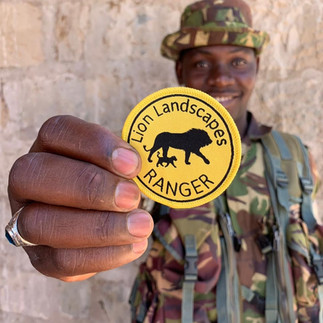Finally the drought breaks, life unfurls and the green season begins here at El Karama Lodge, Laikipia.
After two years of devastation, the rains have finally fallen and continue to fall in great cloud bursts that sweep purple and grey across the once scorched soil and foothills of Mt Kenya behind us. We have endured two years of pressure, loss and worry, but also two years of great accomplishment, rollicking fun and lots of adventure. Our team have excelled themselves and ran the busiest season in the history of our lodge, with families and safari goers from all around the world. They hosting with great care and attention and the guests are immersing in real Kenyan culture as a result, no put on shows or corporate templates here : just good honest professional people who do their best to know all they can and share it.
Still only 8 cottages, with now 5 cars (including two brand new open land cruisers for Nilotica), this lodge remains one of the most unique and intimate settings in which to have a safari in Kenya today. As we keep refining our offering we know there are very few places left that do not compete heavily with other tourists, cars and crowds and it is this unique position that pushes us to always work on improving and offering the best value we can in such an incredible location.
We are fortunate that all our guests are discerning safari goers and understand how precious this experience is. We love helping them get the best out of their time with us by always going the extra mile and hopefully connecting them to the raw life of the bush. Unforgettable family safaris is what we do best: trips we want them to talk about, remember and feel inspired to do again...
We believe this landscape has benefitted from the light physical footprint our small sustainability run lodge offer. We hope there is always room on the market for small, owner operated lodges that are unique and characterful. Combined with consistent and robust revenue stream even during the harshest of times, we aim to continue to be a source of reliable support for the conservancy as a whole so that it can continue to reach its goals. It has been the toughest of years, where water was so scarce, the pressure was everywhere and where people and wildlife was pushed to its limits. But now with the onset of rain all over the country, we hope to see grassland recovery over this next season and will be having lots of fun reminding ourselves the names of all the wild flowers around us that have been so missed: petansia, commelina, lilies galore and the tall, willowy wild hibiscus, the light and drooping wild asparagus..!!!
This past season has been about activity: we have explored this spectacular scenery, all 15,000 acres of it, on foot, on horseback, in vehicles and even in airplanes as more and more of our private clients land right here on the registered airstrip just under 2 kms from the Lodge!
The guests have spent the sunny months climbing up rocky escarpments and down steep river banks into the river bed, finding rocks and treasures hitherto unseen and undiscovered as the water levels fell to an all time low. Picnics have been devoured in whatever shade remained, reading and playing and listening to flies buzzing, bird watching with our expert guide team and laughing at hippos grunting and farting in the last greening pools that remained before the rains arrived.
The wildlife sightings have been exceptional: the sheer proximity and the easy viewing were unparalleled as the grass had never been shorter and cover never quite so thin. So there are silver linings in all times of challenge. All the major predators hosted here were seen almost daily and so many fascinating vignettes of life would emerge: bouncing little bat-eared fox families of 10 or 11 babies, mud-wallowing warthogs waiting until the last minute to get out of their chocolatey stupor, so heavy was their languor in the long, hot afternoons. Striped hyenas skulked, light-footed across carcass strewn plains, aardvark dug furiously at night on what felt like every black cotton high point leaving huge mounds of rich earth with their tell-tale scat left hidden inside. Andrew, always skilled in finding these elusive animals managed to find an aardvark for the third time for a returning client from UK ...almost one sighting for every visit he had made to this Lodge! We hope he and his family will be back again!
And now, after all those months of excitement and outside activity, we come to the natural pause. Our closed season. This month is the time where our hard-working team go home to their families, the shambas and their friends.
They often take part in additional training too that they are keen for: Wachira and Gerard head up to Suyian Soul to enter the Level 1 Birding Course with Washington Wachira, Janie, our Head Chef and two others go to driving school to get their 'wheels' so that they can independently drive the operational pick up to set up meals and the new seasonal menu plan starts to take shape in house and those of us left on site practice hard before the doors open again.
And for those of us on site, we are painting, scrubbing, sanding and polishing, adding little touches here and there where we can but also appreciating the quiet and stillness around us as nature takes over this space for a short time. The days are filled with red-chested cuckoo calls, robin chat songs and at night the lion circle closer and closer as our windows at home stay open and the toads' chorus lulls us to sleep.
In camp, the explosion of life and colour is breathtaking. Carpets of wildflowers cover the landscape, fungi are shyly breaking cover - unbelieving of the moisture that sits in the soil after so much depravation. The lower echelons of the termite mounds are wet and dense, little white sprouting beginnings and those of us foragers in team are precious, almost jealous of our findings when a new edible mushroom appears. David, the carpenter and I continue in our quest to out do each other on 'termitalia' mushroom discoveries for eating....! The birds are nesting and the wildlife seems more peaceful: ungulates are fatter, glossier, more robust looking and it's only been a few weeks. Their resilience is humbling.
The rapidity with which these eco systems regenerate is always surprising and having spent two years dreaming at night of the roar of the river again, we now go about our working days with the song of the water again. That wonderful watery sound encircling us: every time the wind turns and faces me from the south, I hear the roar across the river all the way to Nilotica.
Works continue in camp, but this season it is just the smaller projects. Big investments have been made this year with our now completed expanded exclusion zone and brand new fencing for safety, trees and bushbuck! For those of you who follow our journey, germination and regeneration of key acacia species has been big on our list of priorities this decade. With the gradual increase of year round Elephant herds, the trees on El Karama have been feeling the pressure. Hilltops covered in Acacia Nilotica have been thinned to savannah and we are intent on making sure this opening up does not spread to the luggahs and lower lands or riparian areas. These trees are home not only to multiple bird species, but also the an unusual yellow-winged fruit bat seen only in the gloaming light when it sweeps out on it's wings from underneath the Nilotica's branches. There are also the colourful and sweet-natured Meyer's parrots to be seen here and bold troops of baboons flock to their pods teaching their young how to eat them. The ever toiling bees depend on their pollen too, their significance, these picturesque trees, is un-ending. We humans also need them, choosing their embrace and their wide-shaded bowers, I love to watch the jaunty yellow pollen balls like pom moms against bright blue sky from a blanket underneath.
Never was there a more interconnected specie offering so much to so many and so our hope is that these fenced areas will offer peace to all these trees from Elephant, who so love their leaf whether small or large. With fenced areas around homesteads protecting trees, the baby seedlings that self-seed and those planted by us humans, will have a better chance of survival through the first crucial ten years as they gain their roots. These red soil areas are their chosen habitat and one rarely sees them on the black cotton southern soil, so it is here we must give attention and do as much as we can.
When the world talks about conservation it is always on such enormous scales, which demand in turn huge sums of money and even bigger teams of people. But never underestimate the power of the small acts by individuals too in protecting landscapes and enhancing them .
I learnt early, as a child, watching my parents mend fences, hang bird boxes, plant trees and hedgerows and create ponds and water sources, that biodiversity can be positively affected in zones where people take steps every day to do their bit. It doesn't always have to be big stories, big content, loud messages every time. It can also be slow and steady, quiet and holistic daily efforts in observing your environment keenly and coming to know its unique challenges and then finding every day solutions to help it improve...
If you want to visit El Karama Lodge, Laikipia and be hosted by our warm and charming team who know this place like the back of their hand, just get in touch: reservations@elkaramalodge.com/ +254 0702 996 902 to book our last spaces remaining for the season.

















































Advanced topics often require a methodical approach to ensure assignments meet academic standards. Creating summary notes, solving sample problems, and working on practical applications can reinforce learning. Conceptual clarity plays a crucial role in handling technical subjects effectively. Exploring electrical engineering assignment help enables students to compare different techniques and develop a deeper understanding of each topic. Using simulation tools and practical experiments enhances problem-solving skills, making it easier to apply theoretical knowledge to real-world scenarios and achieve better results.
Elevate your streetwear with the Denim Tears Hoodie, a perfect mix of style and cultural expression. Crafted for comfort and a bold statement, it's a must-have for trendsetters. Shop now at Arsenaljackets.com.
Students often struggle with data-driven research, but finding the right guidance makes a difference. Henry offers SPSS Dissertation Help ensuring students confidently tackle statistical challenges. His in-depth knowledge of programming and research methodologies allows learners to grasp core concepts faster. If you're working on a data-heavy dissertation, expert assistance can streamline the entire process.
Kaiser OTC benefits provide members with discounts on over-the-counter medications, vitamins, and health essentials, promoting better health management and cost-effective wellness solutions.
Obituaries near me help you find recent death notices, providing information about funeral services, memorials, and tributes for loved ones in your area.
is traveluro legit? Many users have had mixed experiences with the platform, so it's important to read reviews and verify deals before booking.
When it comes to running a successful agency, the right tools can make all the difference. GoHighLevel has become the go-to all-in-one platform for marketing agencies looking to scale their operations, streamline workflows, and deliver powerful results for their clients. This blog will guide you through GoHighLevel Pricing Plans in 2025, comparing the features of each plan and offering tips to help you get the most value out of your subscription. Whether you’re just starting or scaling rapidly, this guide makes choosing the right GoHighLevel plan simple.